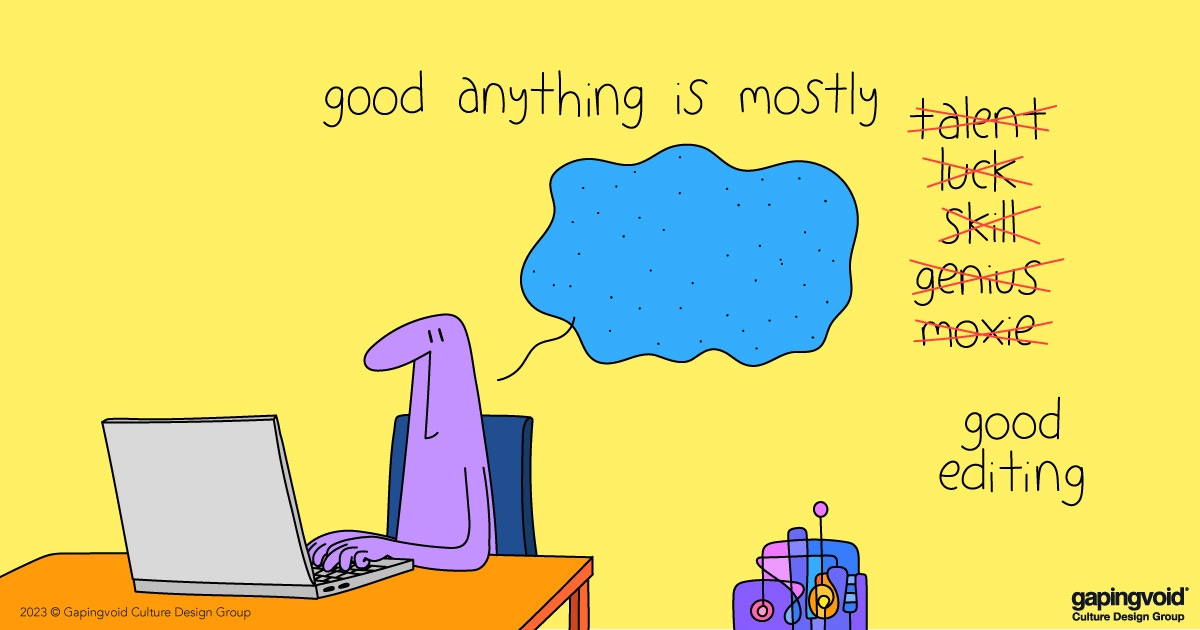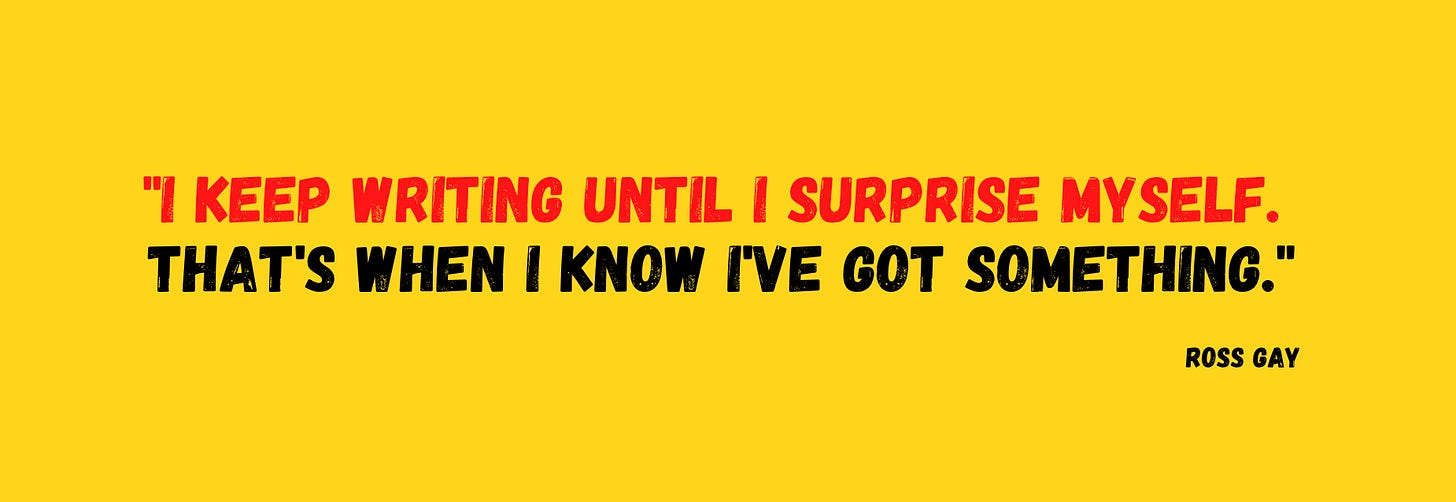Storytelling Skills for Leaders
Becoming a great storyteller is more important, simpler, and harder than you think.
A leader who can't tell stories is like an accountant who can't do math. Storytelling is one of the most essential skills of a leader -- according to Peter Drucker, it's one of eight critical attributes that great leaders possess.1
Unfortunately, 94% of us are ghastly storytellers. How do I know? I analyzed 250 posts in my LinkedIn feed. Only 15, or 6%, were thoughtful, helpful, or non-self-promotional.
Here’s the good news: anyone can become a good storyteller.
The bad news is, most don’t put in the work required. I tested this, too. While teaching How to Present Like a CEO, I asked my audience: how many hours did you spend creating your last 30-slide presentation?
Answers ranged from 2-5 hours.
Then I showed this slide:
The gasps and gulps were audible. But it's true — excellent communication comes from deep thinking and research. Not cool slides.
My CEO coach, Chris, taught me this. I used to marvel at his board presentations — they were crisp, thoughtful, to the point, and conveyed a calm sense of control.
When I asked how long he took to prepare his slides, Chris said, "All quarter long." He explained that he constantly searched for what each setback, win, or change meant in the story arc of the quarter. The slides were the easy part — they took just a few hours.
Carmine Gallo makes this same point: "Spend 27 of your first 36 hours researching, collecting input, organizing ideas, collaborating with colleagues, and sketching the structure for the story."
Hugh MacCloud, the creator of Gapingvoid, illustrates this idea in "ideate, iterate, innovate." Of the 17 panels, our hero's hands hit the keyboard just twice:
The 36-90 rule isn't absolute. Some stories come in a flash. Bob Dylan claimed he wrote some of his classic songs during a cab ride, but I don’t buy that. Maybe a lick or line came in a flash, but his curiosity and strong point of view planted those idea seeds long before the taxi pulled up.
So when do you know you've got something worth sharing? As poet Ross Gay puts it, when you surprise yourself, it's a sign you've got something good,
It's a myth that some people are creative and others aren't. Anyone can tell stories if they put in the work and have a system. Once again, Gapingvoid draws it concisely:

Editing is the essence of great stories, as Ernest Hemingway explains:

Need help believing Gapingvoid, storytelling gurus, and Ernest Hemingway?
How about some neuroscience?
Neuroeconomist Paul Zak's found that storytelling triggers the production of cortisol during tense moments, which helps us focus.
Funny, cute stories have been found to release oxytocin, the feel-good chemical that promotes connection and empathy.
Stories with happy endings trigger the limbic system, our brain's reward center, to release dopamine, making us feel more hopeful and optimistic.
So, there’s science to all of this artistic storytelling stuff too! To learn more, explore the research referenced in The Irresistible Power of Storytelling as a Strategic Business Tool2, by Harrison Monarth for Harvard Business Review.
All It Takes is Hard Work… And Just One More Thing
Stories build passion, motivation, and connection in the enterprise, people, and causes leaders serve. That's why Drucker proclaimed communication to be one of the eight essential attributes of leaders. And all it takes is hard work…
But there's one more thing.
You can't just work hard; you've got to work smart. You need a system and an approach to create stories that stick. Part two of this essay, The S.O.A.R. Storytelling Recipe for Executives, is coming next week. It describes my recipe to create stories that stick.
An approach like S.O.A.R., and some hard work, can help your leadership skills soar to a new level. Stay tuned!
FOOTNOTES
According to Drucker, the eight common skills all effective executives possess are:
They ask, "What needs to be done?"
The ask, "What is right for the enterprise?"
They develop action plans.
They take responsibility for decisions.
They take responsibility for communicating.
They focus on opportunities, not problems.
They run productive meetings.
They "we,” not "I."
The Effective Executive: The Definitive Guide to Getting the Right Things Done, Peter Drucker and Jim Collins (forward)
The Irresistible Power of Storytelling as a Strategic Business Tool by Harrison Monarth for Harvard Business Review







In this vein, it was encouraging to hear that Hemingway rewrote the ending of A Farewell to Arms not 39 times, as he claimed, but nearly 50: "Hemingway famously revealed that he re-wrote the ending 39 times to get the words right, although the actual figure was 47. His semi-autobiographical work is a love story set against the backdrop of the Italian campaigns of World War I. The latest American edition of the book also includes early drafts of other passages and Hemingway's own 1948 introduction to an illustrated re-issue of the novel."
I've seen the terrible storytellers and it is because they don't stop to observe and think. They are constantly doing, and they miss the real story behind the stories. The true story that weaves through, beyond the simplistic.